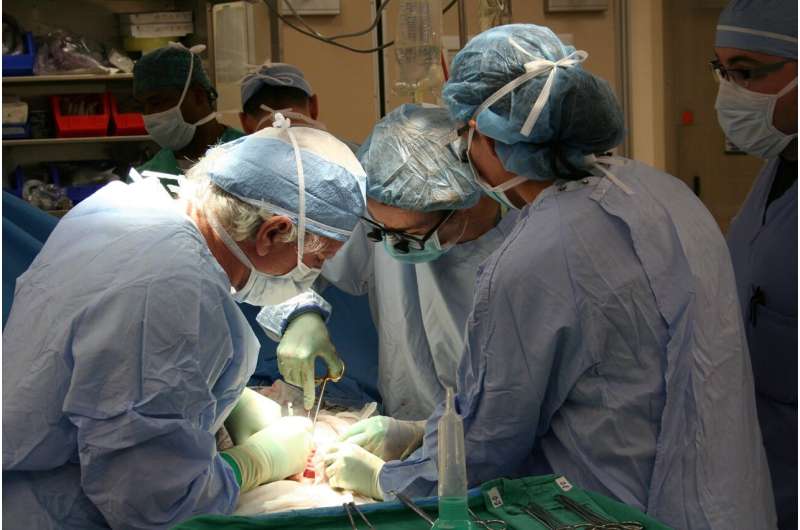This article has been reviewed according to Science X's editorial process and policies. Editors have highlighted the following attributes while ensuring the content's credibility:
fact-checked
peer-reviewed publication
proofread
New study shows potential benefits of normothermic machine perfusion in liver transplantation

A clinical trial comparing conventional low-temperature storage of transplant donor livers with storage at physiological body temperature has revealed promising results for the evolution of liver transplantation. Results from the trial, published this month in Annals of Surgery, show compelling findings that could potentially revolutionize the way we preserve and transplant donor livers.
The randomized controlled study was conducted by 15 liver transplant centers in the United States, including Ochsner Health Liver Transplant Institute, and compared the use of normothermic machine preservation (NMP)—which maintains the organ at normal body temperature—with static cold storage (SCS) in 383 donor organs.
During NMP, the liver is carefully removed from the donor's body and connected to a perfusion machine. The perfusion machine pumps oxygenated blood or a specially designed preservation solution through the organ's blood vessels, replicating the conditions inside the human body.
This process helps to provide the organ with oxygen and nutrients, removing waste products, and maintaining its metabolic activity. The primary objective of the trial was to assess Early Allograft Dysfunction (EAD), a marker of early post-transplant liver injury and function. While the difference in the incidence of EAD did not reach statistical significance, the study's findings suggest that NMP may still have significant benefits for certain donor livers.
Sub-group analyses revealed a greater effect size in donor livers from individuals declared dead by cardiovascular criteria and those with higher risk factors such as age and comorbidities. In these cases, NMP demonstrated a lower incidence of dysfunction. Additionally, the incidence of cardiovascular system failure once blood flow was restored was significantly reduced in the NMP arm. Ari Cohen, MD, medical director of the Multi-Organ Transplant Institute at Ochsner Health and section head of transplant surgery, was a contributing author.
"The results of this study indicate that normothermic machine perfusion is a safe and potentially beneficial technology in liver transplantation," says Cohen. "While it did not lower the overall incidence of EAD, it showed particular promise in marginal donors and those with higher risk factors. This breakthrough has the potential to improve preservation quality, enable pre-transplant testing, and ultimately increase the success rate of liver transplantation."
More information: William C. Chapman et al, Normothermic Machine Perfusion of Donor Livers for Transplantation in the United States—A Randomized Controlled Trial, Annals of Surgery (2023). DOI: 10.1097/SLA.0000000000005934





















